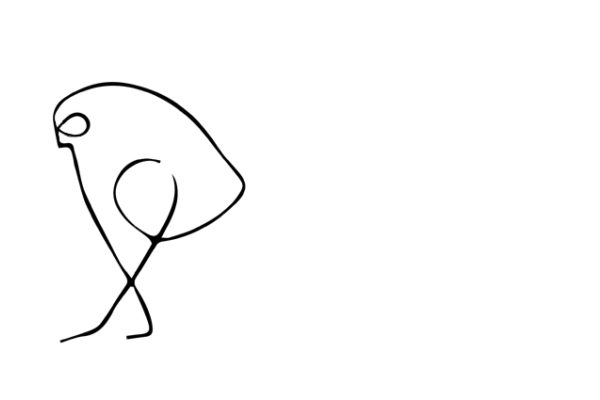
Last year, I shared with my team and publicly on this blog what I needed to learn next:
My priority for my development could be sketched as “three lines to a bird.” By this I meant that while a moderately good artist might take hundreds of lines to convey a bird, an artist like Picasso could get to the essence of a bird in three lines – and all the more beautifully for being spare.
Part of the context for this focus was the forthcoming birth of my daughter Minh, now six months old. In a number of ways I’ve made progress on this agenda of “using fewer lines”: I’ve been able to make the time I’ve wanted for fatherhood, including a month entirely away from work after Minh was born, while growing Incandescent and continuing to diversify the firm’s mix of large corporate clients, entrepreneurial ventures we advise and help to launch, social impact work and pure research.
In recent weeks, I’ve been taking stock. I asked Shanti Nayak, who was for many years our head of People at Katzenbach Partners and a member of our firm’s management team, and who has rejoined me at Incandescent, to conduct an in depth 360 review for me involving each member of our team. I’ve spent time with Charlotte Dobbs, who supports me as chief of staff, reflecting on the patterns of how I work and my effectiveness. Through all this, two things that initially seemed like small, almost trivial details came together as significant in my mind:
- From time to time, particularly when I’m especially rushed, I get impatient with people. Not angry, just curt. This rarely happens when something has gone terribly wrong – it’s much more likely when something is in a relatively small way off what I expect and I’m knocked a little off my stride in getting on with whatever I wanted to be focused on. The impact isn’t huge, but it changes the feeling in the room – and both the person I’m engaging with and I spend time and energy recovering. People might hesitate to ask questions, or cut short a discussion, or assume that I have a view of what they’ve done that I very possibly don’t have.Shanti shared this data with me from the 360 in a very matter-of-fact way. We’ve worked together for over a decade. It wasn’t news to either of us that this is a trap I fall into.
- I always put more on my to-do list than I’ll actually do. I have a tight discipline of weekly planning, in which every week I review all the firm’s goals and my personal goals, synthesize where things stand, and derive from that synthesis a list of the actions that I plan to take. This discipline is very much influenced by David Allen’s work on the weekly review.Nevertheless, I don’t think there’s been more than a week or two in the past 52 in which I’ve literally done everything I put on my list. Big, important things always get done. A lot of little things get done. I’m generally quite responsive to my team, my clients and collaborators, and to a large extended network of people who reach out to me. I work fast. No one would say that the volume of work I complete each week is insufficient. But there’s always a set of things on the list but left undone.
These seem like two very different minor weaknesses. The impatience is quite localized – a kind of annoying periodic departure from our usual team experience of generally careful, expansive listening and thinking together. Putting too many things on my list is a small manifestation of a broader trait of excessive optimism. I see possibilities expansively. Each week ahead seems to hold just a little more than it actually does, just as I see the potential in many things more vividly than I see the obstacles en route. Both are flaws, but at first it seemed neither presents a major barrier to my accomplishing the big things I’ve set out to do.
On further reflection, these two distinct, longstanding issues both seem to represent failures of intentionality:
- Not stepping away from reacting to a person/situation at hand to decide how I want to engage – in which case, I’d almost never choose impatience
- Not making a clear decision that I’m committing to do or not committing to do something on my list – knowing at some level that I might or might not actually be able to complete it
Seeing these two weaknesses through this shared frame suggests that addressing them could be a great way to raise my overall ability to reflect in the moment, make intentional choices, and focus my attention where and how it will have greatest impact. The fact that I’ve had these particular weaknesses for so long make them a particularly good way to work on the broader question of intentionality. I probably can’t progress in either area without “cutting the thread” between my first instinctive reaction to a situation and what how I actually engage, without inserting a moment of reflection and of more intentional choice.
While the work here is primarily internal, it will be important to have team members call out when they see me slipping on these dimensions, as I inevitably will – and helping call my attention back to these areas on which I’m committed to improve. I’m making the bet here that it is worth being distracted from what might otherwise seem to be bigger business questions, in order to receive feedback and work on these areas – because ultimately the payoff to learning how to fix these areas of weakness may be “muscles” that I can use in many other ways as well.
In the end, this particular resolution of “what I want to learn next” connects back to the imperative of three lines to a bird. The best way to achieve the economy of effort and elegance that I aspire to is to be as intentional as possible about what I do and why. Working on impatience and on deciding clearly what I’m really committing to do represents a field on which to practice. Sharing these thoughts in a public way represents both an act of commitment and an expression of the belief that just as companies tend to perform better when they publicly state their vision and priorities, people develop fastest when they’re clear and open about what they aspire to and what they need to learn next.
—
Photo credit: Tiffany Franke



